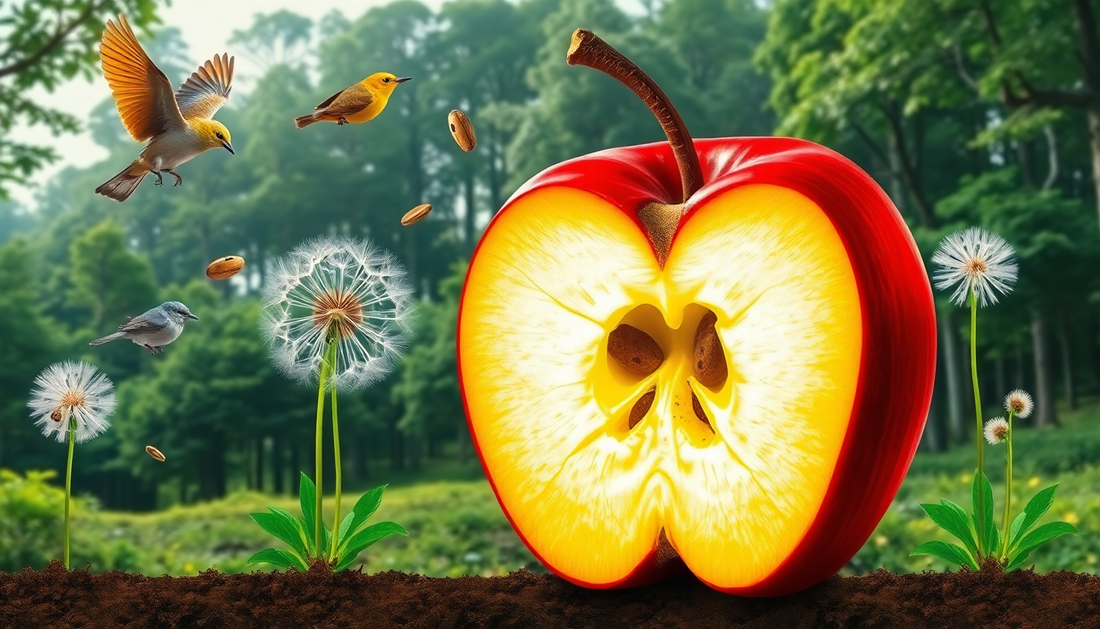
How Fruits and Seeds Help Reduce Plant Growth
Understanding the Role of Fruits in Plant Growth
Let's dive into one of nature's fascinating aspects - the fruit. Often celebrated for their delicious flavors and vibrant colors, fruits play a much more significant role in the life cycle of plants than just being something we include in our diet. Essentially, fruits are the mature ovaries of flowering plants, complete with seeds. They might seem like nature’s candy, but they are far more strategic in their purpose. While they might not actively 'reduce' plant growth in the way you might initially think, they do play a crucial role in managing how a plant expands and develops.
Fruits are crucial in the reproduction process. When a flower is pollinated, and fertilization takes place, the ovary begins to grow and eventually becomes a fruit. This transformation supports the plant's reproductive strategy by encasing and protecting seeds, ensuring they are viable for dispersal when the time is right. By assisting in the reproductive process, fruits inherently manage the plant's growth. Without fruits, seeds would lack the protective casing and nutritional resources they need to mature properly. This controlled maturation process prevents the untimely and unchecked expansion of plants, maintaining a balance within their ecosystem. So, while fruits are a part of plant’s growth, they also help moderate its proliferation by ensuring that seeds are only dispersed under optimal conditions.
The Essential Function of Seeds in Regulating Plant Expansion
Seeds are nature's little packages of potential. Encapsulating the beginning of a plant's life, seeds are designed to endure challenging conditions, sprouting only when circumstances favor growth. By keeping seeds dormant until the right moment, plants naturally limit their expansion. Each seed contains a miniature plant embryo alongside a reserve of food to nourish it until it can produce its food through photosynthesis. The role of these seeds in controlling plant growth can't be understated.
Imagine a forest. If every single seed released by all the trees were to sprout simultaneously, the system would soon collapse under its weight. There'd simply be too many plants competing for sunlight, water, and nutrients. Seeds, therefore, possess adaptations that prevent premature germination and, as a result, reduce unfettered growth. Rain, sunlight, and soil conditions work in harmony with the seed's resilient nature, ensuring that only a select few times and places are ripe for germination. This method keeps plant populations in check, promoting sustainability within ecosystems. So, rather than indiscriminately growing all the time, plants use seeds to wait for opportune moments to expand thoughtfully and efficiently.
The Plant’s Eco-friendly Strategy for Sustainable Growth
Both fruits and seeds embody an eco-friendly strategy for plants. They ensure that plants don’t exhaust the resources in their environment, a move that is vital for survival. Plants have developed their reproductive techniques to be energy-efficient, ensuring they conserve their efforts and propagate their species under the most favorable circumstances. By doing so, they act almost like a quality control manager, overseeing every new addition to the plant population.
Fruits act as enticing vessels for seed transport. Animals eat the fruits and, in doing so, transport seeds far from the parent plant in their digestive tracts. This reduces competition for resources among the same species and allows plants to colonize new areas. It's an ingenious system—even if an animal eats the fruit, the seeds have a chance of survival and sprouting elsewhere. This dissemination method controls growth and supports diversification and adaptation. Thus, in many ways, fruits, by facilitating seed spread, play a vital role in reducing unchecked plant growth in an ecosystem.
Interdependence Between Fruits, Seeds, and the Environment
The relationship between fruits, seeds, and their environment is interdependent and finely tuned. Various environmental factors such as temperature, humidity, light, and the availability of water significantly impact seed germination and fruiting patterns. The synchronization between the availability of these factors and seed release ensures that plants undergo growth spurts only when it is sustainable, thus reducing potential negative environmental impact.
This relationship can also be seen in plant dispersal strategies. Some seeds are dispersed through wind, others through water, and many through animals. These strategies are aligned with ensuring that plants don't overrun their habitat. A methodical dispersal ensures that each new plant will have enough resources to grow without stunting other plants' growth. Thus, fruits and seeds are pivotal in managing not just their plant species growth but also in maintaining ecological balance.
The Evolutionary Advantage: Balancing Growth with Fruit and Seed Strategies
Over millions of years, fruits and seeds have adapted to specific environments, fine-tuning their strategies for maximum reproductive success while also regulating growth. For instance, some seeds have hard shells to survive fire, requiring two extremes:a safe environment to open and grow, and an event like a fire to clear away competition. This balance allows them to manage when and where they populate new plants.
Because of these refined evolutionary strategies, plants avoid reducing their spread to a single method, instead relying on a repertoire of strategies to ensure sustainability. The diversity among species in terms of seed and fruit dispensation plays a critical role in controlling the overall expansion of plant life in any given environment. So, while seeds and fruits might not seem to have an immediate role in reducing plant growth at first glance, they indeed provide plants with an evolutionary advantage to regulate growth, sustain their species, and adapt to an ever-changing world.
